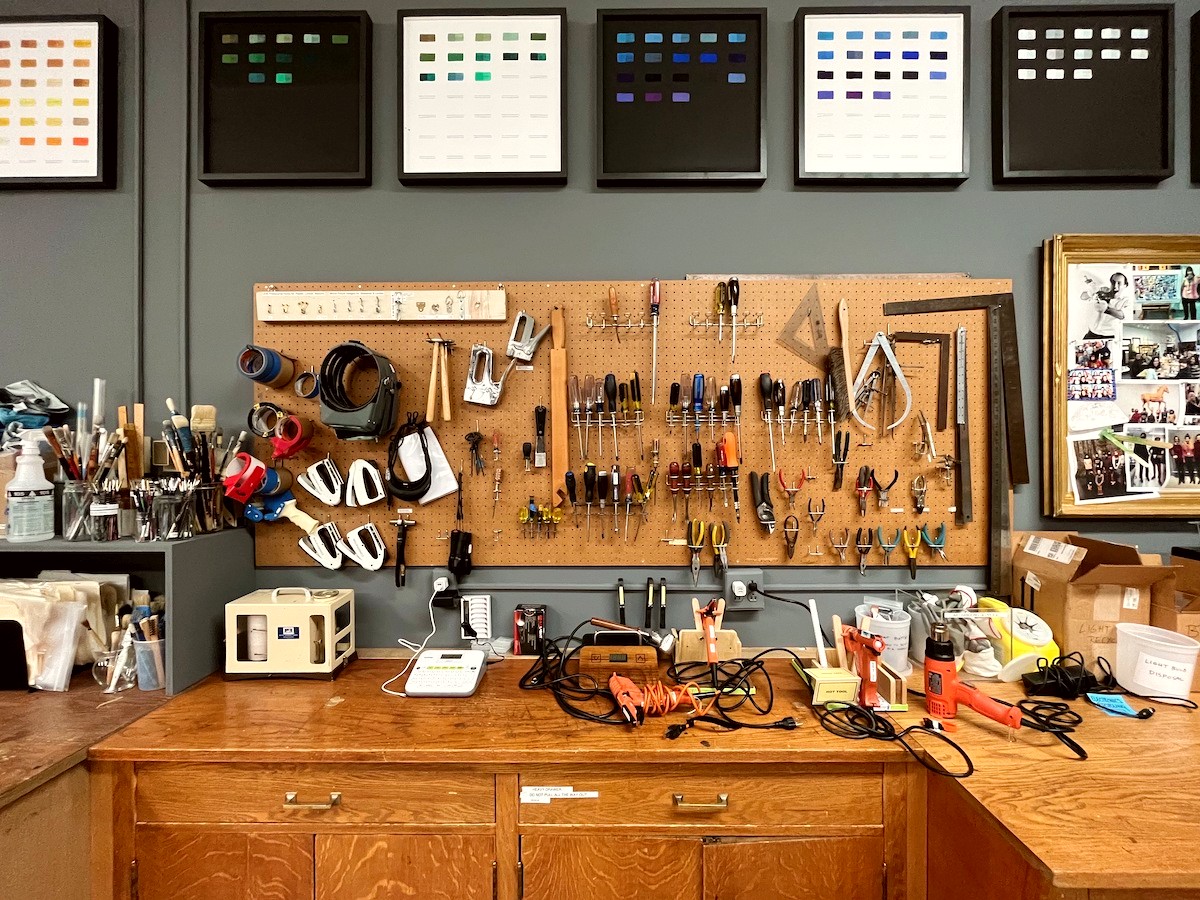
Ask a Conservator: How Do You Become a Conservator?
“People from all types of backgrounds find themselves drawn to this unique career path.”
Ask a Conservator is a regular series demystifying the work that conservators do at the Brooklyn Museum.
I was a senior in college when I found a book that would unlock a career path I didn’t know existed. I was writing a paper on Johannes Vermeer’s Girl with a Pearl Earring, checking out everything I could find that was remotely related, when I came across Jørgen Wadum’s Vermeer Illuminated, a book on the extensive conservation treatment of the painting in 1994. The cover image, with losses to the figure’s cheeks standing out in stark white, was so arresting that I immediately wanted to know more about the painting’s physical history and the effort that had gone into conserving this serene and iconic work. When I read further and realized that conservation blended my love of hands-on work with a research component, my career goals coalesced practically overnight.
Conservation is a tantalizing mix of art and science, and people from all types of backgrounds find themselves drawn to this unique career path. Conservators can start out with undergraduate degrees in any number of fields, such as art history, chemistry, archaeology, studio art, or even ones like architecture, pharmacology, or anthropology (I was an art history major with a concentration in studio art and a minor in anthropology). Though our paths into the field are often very different, many conservators have told me that their “eureka” moments were similar to my own: they discovered conservation and all their interests seemed to slot neatly into place.
Conservation is a tantalizing mix of art and science.
Before conservation was formalized as an academic discipline in the 1960s, becoming a conservator would involve apprenticeships to gain experience “at the bench,” as practical work in a studio or lab is called, under the tutelage of a seasoned member of the field. Now, it’s much more common for students to attend a graduate program and obtain a master’s degree in conservation or historic preservation (which still entails a lot of hands-on benchwork!).
 A view of the conservation lab at the Brooklyn Museum, where conservators work to restore and preserve a range of materials. (Photo: Corinne Segal)
A view of the conservation lab at the Brooklyn Museum, where conservators work to restore and preserve a range of materials. (Photo: Corinne Segal)
Each graduate program has its own prerequisites for entry, but art history, studio art, and chemistry classes are typically required. An ability to work with your hands is a must, so programs often ask applicants to provide a portfolio to demonstrate their aptitude. I’ve seen amazing student portfolios that have included a range of creations: still lifes, portraits, sculpture, calligraphy, ceramics, jewelry, embroidery, frames, and furniture. Since I was already a senior when I decided to pursue a career in conservation, I completed my prerequisites after graduation, taking classes at a local college while working full-time in retail.
Conservators have two major avenues for internships and employment: institutions such as museums and libraries, and private practices, which are independent businesses that typically do contract work for smaller institutions and individuals. I interned at both types after picking up and moving to New York. After that, I attended the Conservation Center at the Institute of Fine Arts, NYU. It’s one of two North American programs that confer two master’s degrees upon completion: one in conservation and one in art history.
In North American graduate programs, students choose a specialty based on the material type they want to work with. Specialties vary by program and can include books, paper (prints and drawings, e.g.), and archival materials; photographs; paintings; costumes and textiles; time-based media (any work with a component that unfolds over time, such as performance art, video, audio, or web-based art); and objects. “Objects” is a really wide category that includes wood, ceramics, metals, stone, plastics, fur, feathers, and even art made of wacky materials like chocolate.
Graduate programs typically last two to four years. The program I attended is the longest, lasting four years: three years at NYU and the fourth year as a graduate intern at an institution or private practice. I specialized in objects, since I love the problem-solving skills needed to work on so many different types of materials. As part of my program, I was able to travel to the Netherlands to see Girl with a Pearl Earring in person and thank her for being such a fundamental part of my career journey.
I completed my graduate internship at the Brooklyn Museum, which I chose because of its huge, encyclopedic collection and its reputation as a teaching institution that gives interns the real-world experience they’ll need in the field. Obviously, I loved it, as I returned after my internship to join the team as Assistant Objects Conservator. I truly enjoy my job and look forward to the new challenges and experiences that every day brings.
For anyone interested in more information on conservation programs, check out the American Institute for Conservation’s guide to becoming a conservator and tips for getting started.
Celeste Mahoney is Assistant Objects Conservator at the Brooklyn Museum.